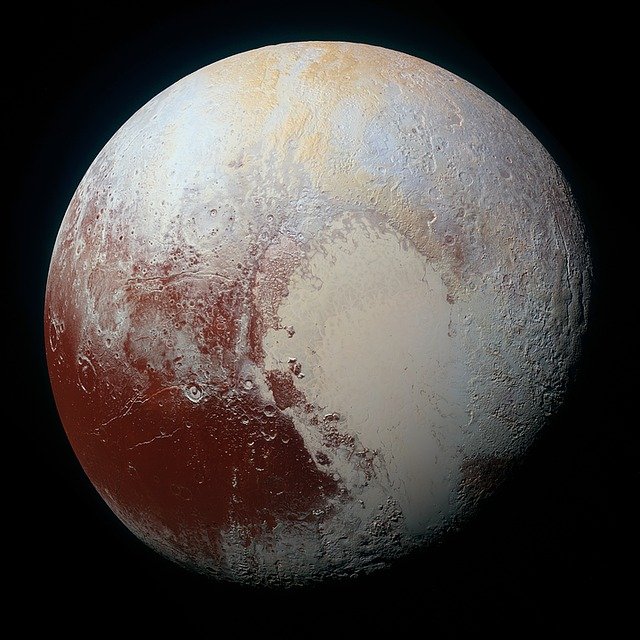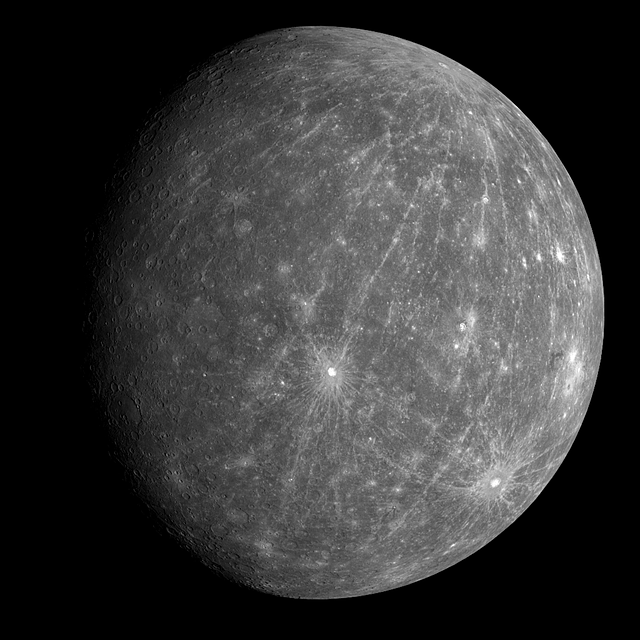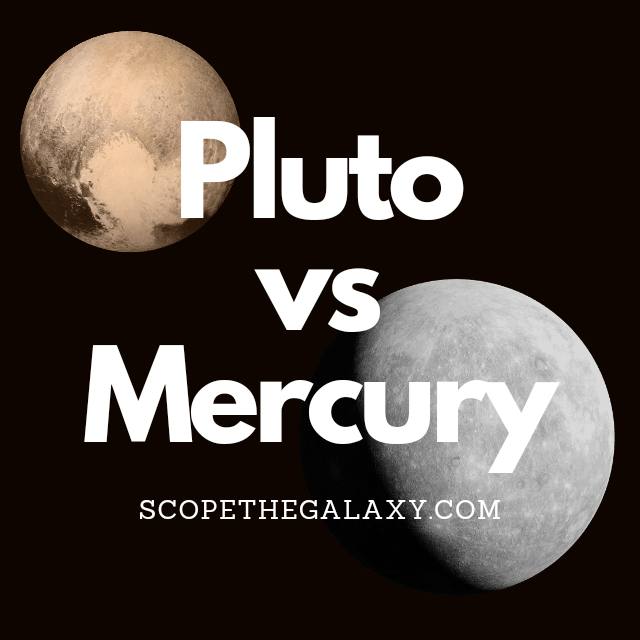*This post may contain affiliate links. This means we may make a commission if you purchase an item using one of our links*
The main differences between Pluto and Mercury is that Pluto is the farthest planet from the Sun whilst Mercury is the closest, Mercury has no moons whilst Pluto has 5, Mercury is far hotter than Pluto, is more than 2 times bigger in regards to diameter and is an offcially recognised planet as opposed to Pluto’s dwarf planet status.
There are numerous less distinct differneces between the two and similarities so continue reading for a more thorough look at the differences between the two.
What Is The Planet Pluto?
Table of Contents

In the past Pluto was the 9th farthest official planet in our solar system however, in 2006 after many debates between astronomers, the International Astronomical Union officially downgraded it to a dwarf planet.
The reason for this downgrade at the time was primarily down to Pluto simply being too small when compared to every other planet and even the moons orbiting these planets. Pluto’s dwarf status is still debated to this day but, for now it remains under this dwarf bracket for a planet
Its diameter for example is only 2,370km, which is a third of Earth’s Moon. With that being said, despite the significant size discrepancy Pluto shows, it still does have more moon like objects orbiting it than Earth and I’m not saying just one more.
In total this terrestrial dwarf planet has 5.
Pluto’s atmosphere consists mostly of molecular nitrogen whilst molecules of methane and carbon monoxide have been observed also. As for its surface, it consist mostly of frozen nitrogen, methane, and carbon monoxide ices.
One of Pluto’s most unique characteristic is that Charon (its largest moon) is tidally locked to it and vice versa, which means that the two essentially orbit each other where, in essence only one side of Charon and one side of Pluto’s surface will face each other at any given time.
Pluto’s temperature is between -222 to -232 degrees Celsius based on how close it gets to the Sun when orbiting it, whilst its core temperature isn’t anything too special sitting around 500 – 1,000 degrees Celsius.
The main reason it’s as cold as it is and has a relatively cold core in comparison to the other planets would be mostly down to its size. A larger size would mean more mass could be compressed at the center which would produce more heat at the core.
Pluto’s orbit is also different from the other main plants in our solar system, following an elliptical orbital path as opposed to the circular path the others take. As a result of its distance from the Sun, Pluto will complete each one of these elliptical cycles around the Sun once every 247.78 years.
Even its rotational cycle is very slow, where one cycle is completed in 157 hours. Another interesting fact is the Pluto’s axial tilt is almost on its side at 57 degrees, similar to Uranus.
What Is The Planet Mercury?

Mercury is the planet closest to our Sun and would fall under the terrestrial planet moniker. Out of the 8 main line planets Mercury is also the smallest, coming in at 4,879km.
This planet is known for having its fair share of craters, which is mostly down to its thinner non protective atmosphere that is unable to stop interstellar debris from striking its surface.
Despite its close proximity to the Sun, Mercury is not the hottest planet in our solar system but, it does come in second, just behind Venus. It’s surfcae temeprature is around 430 degrees on the upper end with the avaerage temperature around 167 degrees celsius whereas its core is far hotter at around 1,600 – 3,000 degrees celsius.
Due to it close proximity to our local star, Mercury is unable to sustain a moon around its orbit and even has a very unqiue rotation around the Sun where it has 3:2 orbital resonance with the Sun.
As for how long it takes for the planet to rotate around our yellow dwarf star, its the shortest time period of 88 days for obvious reasons, whilst a single day on the planet takes 58.65 Earth days to complete. Its axial tilt is only 2 degrees to the right, making it amongst the straightest planets in the solar system too.
How Are Pluto And Mercury Similar?
Both have their fair share of similarities too, some of which include the below:
- Both have a hotter central core.
- Both are a spherical in shape.
- Both are terrestrial planets.
- Both have an atmosphere and a rocky surface.
- Both have no rings surrounding them.
Differences Between Pluto And Mercury
As for the differences between the Pluto and Mercury, they include the following:
- Pluto is the 9th farthest planet from the Sun whilst Mercury is the closest. As a result Pluto completes an orbit around the Sun in 247.78 years whilst Mercury completes it in 88 days.
- Pluto is officially recognised as a dwarf planet whilst Mercury is a normal planet.
- Mercury is far hotter than Pluto where it has a temeprature of 167 degrees celsius and Pluto’s temperature is -222 to -232 degrees celsius.
- Pluto has 5 moons whilts Mercury has 0.
- Pluto is tidally locked to its moon whilst Mercuy is not tidally looked to anything but it does have a 3:2 orbital resonance with the Sun.
- Mercury is bigger than Pluto with a diameter of 4,879km compared to Pluto’s 2,370km.
- Mercury has an axial tilt of 2 degrees whilst Pluto has a 57 degree axial tit.
- A day in Pluto takes 157 hours whilst Mercury completes a rotation in 58.65 days.
- Pluto is a dwarf planet whilst Mercury is a normal planet.
- Pluto has an icy surface whereas Mercury’s is mostly rocky with sulfur spread throughout.
- Pluto has an elliptical orbit whilst Mercury’s is circular.
Summary
Although Mercury and Pluto have their fair share of similarities form their general rocky terrestrial compostion and the fact they orbit the Sun but, it’s pretty clear to see that there are more differences than similarties.
This can be the differences in their temperature, their size, their orbital patterns, the time it takes both to orbit the Sun, their axial tilt and even how long it takes to complete a day. Therefore, despite their dense structures, they are very different from one another.

